-
MARKET DYNAMICS
-
\r\n4.1. Overview
-
\r\n4.2. Drivers
-
\r\n4.3. Restraints
-
\r\n4.4.
-
Opportunities
-
\r\n5. MARKET FACTOR ANALYSIS
-
\r\n5.1. Value chain Analysis
-
\r\n5.2.
-
Porter's Five Forces Analysis
-
\r\n5.2.1. Bargaining Power of Suppliers
-
\r\n5.2.2.
-
Bargaining Power of Buyers
-
\r\n5.2.3. Threat of New Entrants
-
\r\n5.2.4.
-
Threat of Substitutes
-
\r\n5.2.5. Intensity of Rivalry
-
\r\n5.3. COVID-19
-
Impact Analysis
-
\r\n5.3.1. Market Impact Analysis
-
\r\n5.3.2. Regional
-
Impact
-
\r\n5.3.3. Opportunity and Threat Analysis
-
\r\n6. 3D FOOD PRINTING
-
MARKET, BY TECHNOLOGY (USD BILLION)
-
\r\n6.1. FDM
-
\r\n6.2. SLS
-
\r\n6.3.
-
Binder Jetting
-
\r\n6.4. Material Extrusion
-
\r\n7. 3D FOOD PRINTING MARKET,
-
BY APPLICATION (USD BILLION)
-
\r\n7.1. Personal Consumption
-
\r\n7.2.
-
Commercial Food Production
-
\r\n7.3. Food Decoration
-
\r\n7.4. Nutritional
-
Customization
-
\r\n8. 3D FOOD PRINTING MARKET, BY MATERIAL (USD BILLION)
-
\r\n8.1.
-
Proteins
-
\r\n8.2. Carbohydrates
-
\r\n8.3. Fats
-
\r\n8.4. Sugars
-
\r\n9.
-
3D FOOD PRINTING MARKET, BY END USE (USD BILLION)
-
\r\n9.1. Restaurants
-
\r\n9.2.
-
Catering Services
-
\r\n9.3. Households
-
\r\n10. 3D FOOD PRINTING MARKET,
-
BY REGIONAL (USD BILLION)
-
\r\n10.1. North America
-
\r\n10.1.1. US
-
\r\n10.1.2.
-
Canada
-
\r\n10.2. Europe
-
\r\n10.2.1. Germany
-
\r\n10.2.2. UK
-
\r\n10.2.3.
-
France
-
\r\n10.2.4. Russia
-
\r\n10.2.5. Italy
-
\r\n10.2.6. Spain
-
\r\n10.2.7.
-
Rest of Europe
-
\r\n10.3. APAC
-
\r\n10.3.1. China
-
\r\n10.3.2. India
-
\r\n10.3.3.
-
Japan
-
\r\n10.3.4. South Korea
-
\r\n10.3.5. Malaysia
-
\r\n10.3.6.
-
Thailand
-
\r\n10.3.7. Indonesia
-
\r\n10.3.8. Rest of APAC
-
\r\n10.4.
-
South America
-
\r\n10.4.1. Brazil
-
\r\n10.4.2. Mexico
-
\r\n10.4.3.
-
Argentina
-
\r\n10.4.4. Rest of South America
-
\r\n10.5. MEA
-
\r\n10.5.1.
-
GCC Countries
-
\r\n10.5.2. South Africa
-
\r\n10.5.3. Rest of MEA
-
\r\n11.
-
COMPETITIVE LANDSCAPE
-
\r\n11.1. Overview
-
\r\n11.2. Competitive Analysis
-
\r\n11.3.
-
Market share Analysis
-
\r\n11.4. Major Growth Strategy in the 3D Food Printing
-
Market
-
\r\n11.5. Competitive Benchmarking
-
\r\n11.6. Leading Players
-
in Terms of Number of Developments in the 3D Food Printing Market
-
\r\n11.7.
-
Key developments and growth strategies
-
\r\n11.7.1. New Product Launch/Service
-
Deployment
-
\r\n11.7.2. Merger & Acquisitions
-
\r\n11.7.3. Joint Ventures
-
\r\n11.8.
-
Major Players Financial Matrix
-
\r\n11.8.1. Sales and Operating Income
-
\r\n11.8.2.
-
Major Players R&D Expenditure. 2023
-
\r\n12. COMPANY PROFILES
-
\r\n12.1.
-
Natural Machines
-
\r\n12.1.1. Financial Overview
-
\r\n12.1.2. Products
-
Offered
-
\r\n12.1.3. Key Developments
-
\r\n12.1.4. SWOT Analysis
-
\r\n12.1.5.
-
Key Strategies
-
\r\n12.2. ByFlow
-
\r\n12.2.1. Financial Overview
-
\r\n12.2.2.
-
Products Offered
-
\r\n12.2.3. Key Developments
-
\r\n12.2.4. SWOT Analysis
-
\r\n12.2.5.
-
Key Strategies
-
\r\n12.3. TNO
-
\r\n12.3.1. Financial Overview
-
\r\n12.3.2.
-
Products Offered
-
\r\n12.3.3. Key Developments
-
\r\n12.3.4. SWOT Analysis
-
\r\n12.3.5.
-
Key Strategies
-
\r\n12.4. BeeHex
-
\r\n12.4.1. Financial Overview
-
\r\n12.4.2.
-
Products Offered
-
\r\n12.4.3. Key Developments
-
\r\n12.4.4. SWOT Analysis
-
\r\n12.4.5.
-
Key Strategies
-
\r\n12.5. 3D Systems
-
\r\n12.5.1. Financial Overview
-
\r\n12.5.2.
-
Products Offered
-
\r\n12.5.3. Key Developments
-
\r\n12.5.4. SWOT Analysis
-
\r\n12.5.5.
-
Key Strategies
-
\r\n12.6. Anjaney Food
-
\r\n12.6.1. Financial Overview
-
\r\n12.6.2.
-
Products Offered
-
\r\n12.6.3. Key Developments
-
\r\n12.6.4. SWOT Analysis
-
\r\n12.6.5.
-
Key Strategies
-
\r\n12.7. Print2Taste
-
\r\n12.7.1. Financial Overview
-
\r\n12.7.2.
-
Products Offered
-
\r\n12.7.3. Key Developments
-
\r\n12.7.4. SWOT Analysis
-
\r\n12.7.5.
-
Key Strategies
-
\r\n12.8. Foodini
-
\r\n12.8.1. Financial Overview
-
\r\n12.8.2.
-
Products Offered
-
\r\n12.8.3. Key Developments
-
\r\n12.8.4. SWOT Analysis
-
\r\n12.8.5.
-
Key Strategies
-
\r\n12.9. SavorEat
-
\r\n12.9.1. Financial Overview
-
\r\n12.9.2.
-
Products Offered
-
\r\n12.9.3. Key Developments
-
\r\n12.9.4. SWOT Analysis
-
\r\n12.9.5.
-
Key Strategies
-
\r\n12.10. Revolutionary Foods
-
\r\n12.10.1. Financial
-
Overview
-
\r\n12.10.2. Products Offered
-
\r\n12.10.3. Key Developments
-
\r\n12.10.4.
-
SWOT Analysis
-
\r\n12.10.5. Key Strategies
-
\r\n12.11. Foxbot
-
\r\n12.11.1.
-
Financial Overview
-
\r\n12.11.2. Products Offered
-
\r\n12.11.3. Key Developments
-
\r\n12.11.4.
-
SWOT Analysis
-
\r\n12.11.5. Key Strategies
-
\r\n12.12. Redefine Meat
-
\r\n12.12.1.
-
Financial Overview
-
\r\n12.12.2. Products Offered
-
\r\n12.12.3. Key Developments
-
\r\n12.12.4.
-
SWOT Analysis
-
\r\n12.12.5. Key Strategies
-
\r\n12.13. Choc Creator
-
\r\n12.13.1.
-
Financial Overview
-
\r\n12.13.2. Products Offered
-
\r\n12.13.3. Key Developments
-
\r\n12.13.4.
-
SWOT Analysis
-
\r\n12.13.5. Key Strategies
-
\r\n13. APPENDIX
-
\r\n13.1.
-
References
-
\r\n13.2. Related Reports
-
\r\nLIST OF TABLES
-
\r\nTABLE
-
LIST OF ASSUMPTIONS
-
\r\nTABLE 2. NORTH AMERICA 3D FOOD PRINTING MARKET
-
SIZE ESTIMATES & FORECAST, BY TECHNOLOGY, 2019-2035 (USD BILLIONS)
-
\r\nTABLE
-
NORTH AMERICA 3D FOOD PRINTING MARKET SIZE ESTIMATES & FORECAST, BY APPLICATION,
-
\r\nTABLE 4. NORTH AMERICA 3D FOOD PRINTING MARKET
-
SIZE ESTIMATES & FORECAST, BY MATERIAL, 2019-2035 (USD BILLIONS)
-
\r\nTABLE
-
NORTH AMERICA 3D FOOD PRINTING MARKET SIZE ESTIMATES & FORECAST, BY END USE,
-
\r\nTABLE 6. NORTH AMERICA 3D FOOD PRINTING MARKET
-
SIZE ESTIMATES & FORECAST, BY REGIONAL, 2019-2035 (USD BILLIONS)
-
\r\nTABLE
-
US 3D FOOD PRINTING MARKET SIZE ESTIMATES & FORECAST, BY TECHNOLOGY, 2019-2035
-
(USD BILLIONS)
-
\r\nTABLE 8. US 3D FOOD PRINTING MARKET SIZE ESTIMATES &
-
FORECAST, BY APPLICATION, 2019-2035 (USD BILLIONS)
-
\r\nTABLE 9. US 3D FOOD
-
PRINTING MARKET SIZE ESTIMATES & FORECAST, BY MATERIAL, 2019-2035 (USD BILLIONS)
-
\r\nTABLE
-
US 3D FOOD PRINTING MARKET SIZE ESTIMATES & FORECAST, BY END USE, 2019-2035
-
(USD BILLIONS)
-
\r\nTABLE 11. US 3D FOOD PRINTING MARKET SIZE ESTIMATES &
-
FORECAST, BY REGIONAL, 2019-2035 (USD BILLIONS)
-
\r\nTABLE 12. CANADA 3D FOOD
-
PRINTING MARKET SIZE ESTIMATES & FORECAST, BY TECHNOLOGY, 2019-2035 (USD BILLIONS)
-
\r\nTABLE
-
CANADA 3D FOOD PRINTING MARKET SIZE ESTIMATES & FORECAST, BY APPLICATION,
-
\r\nTABLE 14. CANADA 3D FOOD PRINTING MARKET SIZE
-
ESTIMATES & FORECAST, BY MATERIAL, 2019-2035 (USD BILLIONS)
-
\r\nTABLE
-
CANADA 3D FOOD PRINTING MARKET SIZE ESTIMATES & FORECAST, BY END USE, 2019-2035
-
(USD BILLIONS)
-
\r\nTABLE 16. CANADA 3D FOOD PRINTING MARKET SIZE ESTIMATES
-
& FORECAST, BY REGIONAL, 2019-2035 (USD BILLIONS)
-
\r\nTABLE 17. EUROPE
-
3D FOOD PRINTING MARKET SIZE ESTIMATES & FORECAST, BY TECHNOLOGY, 2019-2035
-
(USD BILLIONS)
-
\r\nTABLE 18. EUROPE 3D FOOD PRINTING MARKET SIZE ESTIMATES
-
& FORECAST, BY APPLICATION, 2019-2035 (USD BILLIONS)
-
\r\nTABLE 19. EUROPE
-
3D FOOD PRINTING MARKET SIZE ESTIMATES & FORECAST, BY MATERIAL, 2019-2035 (USD
-
BILLIONS)
-
\r\nTABLE 20. EUROPE 3D FOOD PRINTING MARKET SIZE ESTIMATES &
-
FORECAST, BY END USE, 2019-2035 (USD BILLIONS)
-
\r\nTABLE 21. EUROPE 3D FOOD
-
PRINTING MARKET SIZE ESTIMATES & FORECAST, BY REGIONAL, 2019-2035 (USD BILLIONS)
-
\r\nTABLE
-
GERMANY 3D FOOD PRINTING MARKET SIZE ESTIMATES & FORECAST, BY TECHNOLOGY,
-
\r\nTABLE 23. GERMANY 3D FOOD PRINTING MARKET SIZE
-
ESTIMATES & FORECAST, BY APPLICATION, 2019-2035 (USD BILLIONS)
-
\r\nTABLE
-
GERMANY 3D FOOD PRINTING MARKET SIZE ESTIMATES & FORECAST, BY MATERIAL,
-
\r\nTABLE 25. GERMANY 3D FOOD PRINTING MARKET SIZE
-
ESTIMATES & FORECAST, BY END USE, 2019-2035 (USD BILLIONS)
-
\r\nTABLE 26.
-
GERMANY 3D FOOD PRINTING MARKET SIZE ESTIMATES & FORECAST, BY REGIONAL, 2019-2035
-
(USD BILLIONS)
-
\r\nTABLE 27. UK 3D FOOD PRINTING MARKET SIZE ESTIMATES &
-
FORECAST, BY TECHNOLOGY, 2019-2035 (USD BILLIONS)
-
\r\nTABLE 28. UK 3D FOOD
-
PRINTING MARKET SIZE ESTIMATES & FORECAST, BY APPLICATION, 2019-2035 (USD BILLIONS)
-
\r\nTABLE
-
UK 3D FOOD PRINTING MARKET SIZE ESTIMATES & FORECAST, BY MATERIAL, 2019-2035
-
(USD BILLIONS)
-
\r\nTABLE 30. UK 3D FOOD PRINTING MARKET SIZE ESTIMATES &
-
FORECAST, BY END USE, 2019-2035 (USD BILLIONS)
-
\r\nTABLE 31. UK 3D FOOD PRINTING
-
MARKET SIZE ESTIMATES & FORECAST, BY REGIONAL, 2019-2035 (USD BILLIONS)
-
\r\nTABLE
-
FRANCE 3D FOOD PRINTING MARKET SIZE ESTIMATES & FORECAST, BY TECHNOLOGY,
-
\r\nTABLE 33. FRANCE 3D FOOD PRINTING MARKET SIZE
-
ESTIMATES & FORECAST, BY APPLICATION, 2019-2035 (USD BILLIONS)
-
\r\nTABLE
-
FRANCE 3D FOOD PRINTING MARKET SIZE ESTIMATES & FORECAST, BY MATERIAL, 2019-2035
-
(USD BILLIONS)
-
\r\nTABLE 35. FRANCE 3D FOOD PRINTING MARKET SIZE ESTIMATES
-
& FORECAST, BY END USE, 2019-2035 (USD BILLIONS)
-
\r\nTABLE 36. FRANCE
-
3D FOOD PRINTING MARKET SIZE ESTIMATES & FORECAST, BY REGIONAL, 2019-2035 (USD
-
BILLIONS)
-
\r\nTABLE 37. RUSSIA 3D FOOD PRINTING MARKET SIZE ESTIMATES &
-
FORECAST, BY TECHNOLOGY, 2019-2035 (USD BILLIONS)
-
\r\nTABLE 38. RUSSIA 3D
-
FOOD PRINTING MARKET SIZE ESTIMATES & FORECAST, BY APPLICATION, 2019-2035 (USD
-
BILLIONS)
-
\r\nTABLE 39. RUSSIA 3D FOOD PRINTING MARKET SIZE ESTIMATES &
-
FORECAST, BY MATERIAL, 2019-2035 (USD BILLIONS)
-
\r\nTABLE 40. RUSSIA 3D FOOD
-
PRINTING MARKET SIZE ESTIMATES & FORECAST, BY END USE, 2019-2035 (USD BILLIONS)
-
\r\nTABLE
-
RUSSIA 3D FOOD PRINTING MARKET SIZE ESTIMATES & FORECAST, BY REGIONAL, 2019-2035
-
(USD BILLIONS)
-
\r\nTABLE 42. ITALY 3D FOOD PRINTING MARKET SIZE ESTIMATES
-
& FORECAST, BY TECHNOLOGY, 2019-2035 (USD BILLIONS)
-
\r\nTABLE 43. ITALY
-
3D FOOD PRINTING MARKET SIZE ESTIMATES & FORECAST, BY APPLICATION, 2019-2035
-
(USD BILLIONS)
-
\r\nTABLE 44. ITALY 3D FOOD PRINTING MARKET SIZE ESTIMATES
-
& FORECAST, BY MATERIAL, 2019-2035 (USD BILLIONS)
-
\r\nTABLE 45. ITALY
-
3D FOOD PRINTING MARKET SIZE ESTIMATES & FORECAST, BY END USE, 2019-2035 (USD
-
BILLIONS)
-
\r\nTABLE 46. ITALY 3D FOOD PRINTING MARKET SIZE ESTIMATES &
-
FORECAST, BY REGIONAL, 2019-2035 (USD BILLIONS)
-
\r\nTABLE 47. SPAIN 3D FOOD
-
PRINTING MARKET SIZE ESTIMATES & FORECAST, BY TECHNOLOGY, 2019-2035 (USD BILLIONS)
-
\r\nTABLE
-
SPAIN 3D FOOD PRINTING MARKET SIZE ESTIMATES & FORECAST, BY APPLICATION,
-
\r\nTABLE 49. SPAIN 3D FOOD PRINTING MARKET SIZE
-
ESTIMATES & FORECAST, BY MATERIAL, 2019-2035 (USD BILLIONS)
-
\r\nTABLE
-
SPAIN 3D FOOD PRINTING MARKET SIZE ESTIMATES & FORECAST, BY END USE, 2019-2035
-
(USD BILLIONS)
-
\r\nTABLE 51. SPAIN 3D FOOD PRINTING MARKET SIZE ESTIMATES
-
& FORECAST, BY REGIONAL, 2019-2035 (USD BILLIONS)
-
\r\nTABLE 52. REST OF
-
EUROPE 3D FOOD PRINTING MARKET SIZE ESTIMATES & FORECAST, BY TECHNOLOGY, 2019-2035
-
(USD BILLIONS)
-
\r\nTABLE 53. REST OF EUROPE 3D FOOD PRINTING MARKET SIZE ESTIMATES
-
& FORECAST, BY APPLICATION, 2019-2035 (USD BILLIONS)
-
\r\nTABLE 54. REST
-
OF EUROPE 3D FOOD PRINTING MARKET SIZE ESTIMATES & FORECAST, BY MATERIAL, 2019-2035
-
(USD BILLIONS)
-
\r\nTABLE 55. REST OF EUROPE 3D FOOD PRINTING MARKET SIZE ESTIMATES
-
& FORECAST, BY END USE, 2019-2035 (USD BILLIONS)
-
\r\nTABLE 56. REST OF
-
EUROPE 3D FOOD PRINTING MARKET SIZE ESTIMATES & FORECAST, BY REGIONAL, 2019-2035
-
(USD BILLIONS)
-
\r\nTABLE 57. APAC 3D FOOD PRINTING MARKET SIZE ESTIMATES &
-
FORECAST, BY TECHNOLOGY, 2019-2035 (USD BILLIONS)
-
\r\nTABLE 58. APAC 3D FOOD
-
PRINTING MARKET SIZE ESTIMATES & FORECAST, BY APPLICATION, 2019-2035 (USD BILLIONS)
-
\r\nTABLE
-
APAC 3D FOOD PRINTING MARKET SIZE ESTIMATES & FORECAST, BY MATERIAL, 2019-2035
-
(USD BILLIONS)
-
\r\nTABLE 60. APAC 3D FOOD PRINTING MARKET SIZE ESTIMATES &
-
FORECAST, BY END USE, 2019-2035 (USD BILLIONS)
-
\r\nTABLE 61. APAC 3D FOOD
-
PRINTING MARKET SIZE ESTIMATES & FORECAST, BY REGIONAL, 2019-2035 (USD BILLIONS)
-
\r\nTABLE
-
CHINA 3D FOOD PRINTING MARKET SIZE ESTIMATES & FORECAST, BY TECHNOLOGY,
-
\r\nTABLE 63. CHINA 3D FOOD PRINTING MARKET SIZE
-
ESTIMATES & FORECAST, BY APPLICATION, 2019-2035 (USD BILLIONS)
-
\r\nTABLE
-
CHINA 3D FOOD PRINTING MARKET SIZE ESTIMATES & FORECAST, BY MATERIAL, 2019-2035
-
(USD BILLIONS)
-
\r\nTABLE 65. CHINA 3D FOOD PRINTING MARKET SIZE ESTIMATES
-
& FORECAST, BY END USE, 2019-2035 (USD BILLIONS)
-
\r\nTABLE 66. CHINA 3D
-
FOOD PRINTING MARKET SIZE ESTIMATES & FORECAST, BY REGIONAL, 2019-2035 (USD
-
BILLIONS)
-
\r\nTABLE 67. INDIA 3D FOOD PRINTING MARKET SIZE ESTIMATES &
-
FORECAST, BY TECHNOLOGY, 2019-2035 (USD BILLIONS)
-
\r\nTABLE 68. INDIA 3D FOOD
-
PRINTING MARKET SIZE ESTIMATES & FORECAST, BY APPLICATION, 2019-2035 (USD BILLIONS)
-
\r\nTABLE
-
INDIA 3D FOOD PRINTING MARKET SIZE ESTIMATES & FORECAST, BY MATERIAL, 2019-2035
-
(USD BILLIONS)
-
\r\nTABLE 70. INDIA 3D FOOD PRINTING MARKET SIZE ESTIMATES
-
& FORECAST, BY END USE, 2019-2035 (USD BILLIONS)
-
\r\nTABLE 71. INDIA 3D
-
FOOD PRINTING MARKET SIZE ESTIMATES & FORECAST, BY REGIONAL, 2019-2035 (USD
-
BILLIONS)
-
\r\nTABLE 72. JAPAN 3D FOOD PRINTING MARKET SIZE ESTIMATES &
-
FORECAST, BY TECHNOLOGY, 2019-2035 (USD BILLIONS)
-
\r\nTABLE 73. JAPAN 3D FOOD
-
PRINTING MARKET SIZE ESTIMATES & FORECAST, BY APPLICATION, 2019-2035 (USD BILLIONS)
-
\r\nTABLE
-
JAPAN 3D FOOD PRINTING MARKET SIZE ESTIMATES & FORECAST, BY MATERIAL, 2019-2035
-
(USD BILLIONS)
-
\r\nTABLE 75. JAPAN 3D FOOD PRINTING MARKET SIZE ESTIMATES
-
& FORECAST, BY END USE, 2019-2035 (USD BILLIONS)
-
\r\nTABLE 76. JAPAN 3D
-
FOOD PRINTING MARKET SIZE ESTIMATES & FORECAST, BY REGIONAL, 2019-2035 (USD
-
BILLIONS)
-
\r\nTABLE 77. SOUTH KOREA 3D FOOD PRINTING MARKET SIZE ESTIMATES
-
& FORECAST, BY TECHNOLOGY, 2019-2035 (USD BILLIONS)
-
\r\nTABLE 78. SOUTH
-
KOREA 3D FOOD PRINTING MARKET SIZE ESTIMATES & FORECAST, BY APPLICATION, 2019-2035
-
(USD BILLIONS)
-
\r\nTABLE 79. SOUTH KOREA 3D FOOD PRINTING MARKET SIZE ESTIMATES
-
& FORECAST, BY MATERIAL, 2019-2035 (USD BILLIONS)
-
\r\nTABLE 80. SOUTH
-
KOREA 3D FOOD PRINTING MARKET SIZE ESTIMATES & FORECAST, BY END USE, 2019-2035
-
(USD BILLIONS)
-
\r\nTABLE 81. SOUTH KOREA 3D FOOD PRINTING MARKET SIZE ESTIMATES
-
& FORECAST, BY REGIONAL, 2019-2035 (USD BILLIONS)
-
\r\nTABLE 82. MALAYSIA
-
3D FOOD PRINTING MARKET SIZE ESTIMATES & FORECAST, BY TECHNOLOGY, 2019-2035
-
(USD BILLIONS)
-
\r\nTABLE 83. MALAYSIA 3D FOOD PRINTING MARKET SIZE ESTIMATES
-
& FORECAST, BY APPLICATION, 2019-2035 (USD BILLIONS)
-
\r\nTABLE 84. MALAYSIA
-
3D FOOD PRINTING MARKET SIZE ESTIMATES & FORECAST, BY MATERIAL, 2019-2035 (USD
-
BILLIONS)
-
\r\nTABLE 85. MALAYSIA 3D FOOD PRINTING MARKET SIZE ESTIMATES &
-
FORECAST, BY END USE, 2019-2035 (USD BILLIONS)
-
\r\nTABLE 86. MALAYSIA 3D FOOD
-
PRINTING MARKET SIZE ESTIMATES & FORECAST, BY REGIONAL, 2019-2035 (USD BILLIONS)
-
\r\nTABLE
-
THAILAND 3D FOOD PRINTING MARKET SIZE ESTIMATES & FORECAST, BY TECHNOLOGY,
-
\r\nTABLE 88. THAILAND 3D FOOD PRINTING MARKET SIZE
-
ESTIMATES & FORECAST, BY APPLICATION, 2019-2035 (USD BILLIONS)
-
\r\nTABLE
-
THAILAND 3D FOOD PRINTING MARKET SIZE ESTIMATES & FORECAST, BY MATERIAL,
-
\r\nTABLE 90. THAILAND 3D FOOD PRINTING MARKET SIZE
-
ESTIMATES & FORECAST, BY END USE, 2019-2035 (USD BILLIONS)
-
\r\nTABLE 91.
-
THAILAND 3D FOOD PRINTING MARKET SIZE ESTIMATES & FORECAST, BY REGIONAL, 2019-2035
-
(USD BILLIONS)
-
\r\nTABLE 92. INDONESIA 3D FOOD PRINTING MARKET SIZE ESTIMATES
-
& FORECAST, BY TECHNOLOGY, 2019-2035 (USD BILLIONS)
-
\r\nTABLE 93. INDONESIA
-
3D FOOD PRINTING MARKET SIZE ESTIMATES & FORECAST, BY APPLICATION, 2019-2035
-
(USD BILLIONS)
-
\r\nTABLE 94. INDONESIA 3D FOOD PRINTING MARKET SIZE ESTIMATES
-
& FORECAST, BY MATERIAL, 2019-2035 (USD BILLIONS)
-
\r\nTABLE 95. INDONESIA
-
3D FOOD PRINTING MARKET SIZE ESTIMATES & FORECAST, BY END USE, 2019-2035 (USD
-
BILLIONS)
-
\r\nTABLE 96. INDONESIA 3D FOOD PRINTING MARKET SIZE ESTIMATES &
-
FORECAST, BY REGIONAL, 2019-2035 (USD BILLIONS)
-
\r\nTABLE 97. REST OF APAC
-
3D FOOD PRINTING MARKET SIZE ESTIMATES & FORECAST, BY TECHNOLOGY, 2019-2035
-
(USD BILLIONS)
-
\r\nTABLE 98. REST OF APAC 3D FOOD PRINTING MARKET SIZE ESTIMATES
-
& FORECAST, BY APPLICATION, 2019-2035 (USD BILLIONS)
-
\r\nTABLE 99. REST
-
OF APAC 3D FOOD PRINTING MARKET SIZE ESTIMATES & FORECAST, BY MATERIAL, 2019-2035
-
(USD BILLIONS)
-
\r\nTABLE 100. REST OF APAC 3D FOOD PRINTING MARKET SIZE ESTIMATES
-
& FORECAST, BY END USE, 2019-2035 (USD BILLIONS)
-
\r\nTABLE 101. REST OF
-
APAC 3D FOOD PRINTING MARKET SIZE ESTIMATES & FORECAST, BY REGIONAL, 2019-2035
-
(USD BILLIONS)
-
\r\nTABLE 102. SOUTH AMERICA 3D FOOD PRINTING MARKET SIZE ESTIMATES
-
& FORECAST, BY TECHNOLOGY, 2019-2035 (USD BILLIONS)
-
\r\nTABLE 103. SOUTH
-
AMERICA 3D FOOD PRINTING MARKET SIZE ESTIMATES & FORECAST, BY APPLICATION, 2019-2035
-
(USD BILLIONS)
-
\r\nTABLE 104. SOUTH AMERICA 3D FOOD PRINTING MARKET SIZE ESTIMATES
-
& FORECAST, BY MATERIAL, 2019-2035 (USD BILLIONS)
-
\r\nTABLE 105. SOUTH
-
AMERICA 3D FOOD PRINTING MARKET SIZE ESTIMATES & FORECAST, BY END USE, 2019-2035
-
(USD BILLIONS)
-
\r\nTABLE 106. SOUTH AMERICA 3D FOOD PRINTING MARKET SIZE ESTIMATES
-
& FORECAST, BY REGIONAL, 2019-2035 (USD BILLIONS)
-
\r\nTABLE 107. BRAZIL
-
3D FOOD PRINTING MARKET SIZE ESTIMATES & FORECAST, BY TECHNOLOGY, 2019-2035
-
(USD BILLIONS)
-
\r\nTABLE 108. BRAZIL 3D FOOD PRINTING MARKET SIZE ESTIMATES
-
& FORECAST, BY APPLICATION, 2019-2035 (USD BILLIONS)
-
\r\nTABLE 109. BRAZIL
-
3D FOOD PRINTING MARKET SIZE ESTIMATES & FORECAST, BY MATERIAL, 2019-2035 (USD
-
BILLIONS)
-
\r\nTABLE 110. BRAZIL 3D FOOD PRINTING MARKET SIZE ESTIMATES &
-
FORECAST, BY END USE, 2019-2035 (USD BILLIONS)
-
\r\nTABLE 111. BRAZIL 3D FOOD
-
PRINTING MARKET SIZE ESTIMATES & FORECAST, BY REGIONAL, 2019-2035 (USD BILLIONS)
-
\r\nTABLE
-
MEXICO 3D FOOD PRINTING MARKET SIZE ESTIMATES & FORECAST, BY TECHNOLOGY,
-
\r\nTABLE 113. MEXICO 3D FOOD PRINTING MARKET SIZE
-
ESTIMATES & FORECAST, BY APPLICATION, 2019-2035 (USD BILLIONS)
-
\r\nTABLE
-
MEXICO 3D FOOD PRINTING MARKET SIZE ESTIMATES & FORECAST, BY MATERIAL,
-
\r\nTABLE 115. MEXICO 3D FOOD PRINTING MARKET SIZE
-
ESTIMATES & FORECAST, BY END USE, 2019-2035 (USD BILLIONS)
-
\r\nTABLE 116.
-
MEXICO 3D FOOD PRINTING MARKET SIZE ESTIMATES & FORECAST, BY REGIONAL, 2019-2035
-
(USD BILLIONS)
-
\r\nTABLE 117. ARGENTINA 3D FOOD PRINTING MARKET SIZE ESTIMATES
-
& FORECAST, BY TECHNOLOGY, 2019-2035 (USD BILLIONS)
-
\r\nTABLE 118. ARGENTINA
-
3D FOOD PRINTING MARKET SIZE ESTIMATES & FORECAST, BY APPLICATION, 2019-2035
-
(USD BILLIONS)
-
\r\nTABLE 119. ARGENTINA 3D FOOD PRINTING MARKET SIZE ESTIMATES
-
& FORECAST, BY MATERIAL, 2019-2035 (USD BILLIONS)
-
\r\nTABLE 120. ARGENTINA
-
3D FOOD PRINTING MARKET SIZE ESTIMATES & FORECAST, BY END USE, 2019-2035 (USD
-
BILLIONS)
-
\r\nTABLE 121. ARGENTINA 3D FOOD PRINTING MARKET SIZE ESTIMATES
-
& FORECAST, BY REGIONAL, 2019-2035 (USD BILLIONS)
-
\r\nTABLE 122. REST
-
OF SOUTH AMERICA 3D FOOD PRINTING MARKET SIZE ESTIMATES & FORECAST, BY TECHNOLOGY,
-
\r\nTABLE 123. REST OF SOUTH AMERICA 3D FOOD PRINTING
-
MARKET SIZE ESTIMATES & FORECAST, BY APPLICATION, 2019-2035 (USD BILLIONS)
-
\r\nTABLE
-
REST OF SOUTH AMERICA 3D FOOD PRINTING MARKET SIZE ESTIMATES & FORECAST,
-
BY MATERIAL, 2019-2035 (USD BILLIONS)
-
\r\nTABLE 125. REST OF SOUTH AMERICA
-
3D FOOD PRINTING MARKET SIZE ESTIMATES & FORECAST, BY END USE, 2019-2035 (USD
-
BILLIONS)
-
\r\nTABLE 126. REST OF SOUTH AMERICA 3D FOOD PRINTING MARKET SIZE
-
ESTIMATES & FORECAST, BY REGIONAL, 2019-2035 (USD BILLIONS)
-
\r\nTABLE
-
MEA 3D FOOD PRINTING MARKET SIZE ESTIMATES & FORECAST, BY TECHNOLOGY, 2019-2035
-
(USD BILLIONS)
-
\r\nTABLE 128. MEA 3D FOOD PRINTING MARKET SIZE ESTIMATES &
-
FORECAST, BY APPLICATION, 2019-2035 (USD BILLIONS)
-
\r\nTABLE 129. MEA 3D FOOD
-
PRINTING MARKET SIZE ESTIMATES & FORECAST, BY MATERIAL, 2019-2035 (USD BILLIONS)
-
\r\nTABLE
-
MEA 3D FOOD PRINTING MARKET SIZE ESTIMATES & FORECAST, BY END USE, 2019-2035
-
(USD BILLIONS)
-
\r\nTABLE 131. MEA 3D FOOD PRINTING MARKET SIZE ESTIMATES &
-
FORECAST, BY REGIONAL, 2019-2035 (USD BILLIONS)
-
\r\nTABLE 132. GCC COUNTRIES
-
3D FOOD PRINTING MARKET SIZE ESTIMATES & FORECAST, BY TECHNOLOGY, 2019-2035
-
(USD BILLIONS)
-
\r\nTABLE 133. GCC COUNTRIES 3D FOOD PRINTING MARKET SIZE ESTIMATES
-
& FORECAST, BY APPLICATION, 2019-2035 (USD BILLIONS)
-
\r\nTABLE 134. GCC
-
COUNTRIES 3D FOOD PRINTING MARKET SIZE ESTIMATES & FORECAST, BY MATERIAL, 2019-2035
-
(USD BILLIONS)
-
\r\nTABLE 135. GCC COUNTRIES 3D FOOD PRINTING MARKET SIZE ESTIMATES
-
& FORECAST, BY END USE, 2019-2035 (USD BILLIONS)
-
\r\nTABLE 136. GCC COUNTRIES
-
3D FOOD PRINTING MARKET SIZE ESTIMATES & FORECAST, BY REGIONAL, 2019-2035 (USD
-
BILLIONS)
-
\r\nTABLE 137. SOUTH AFRICA 3D FOOD PRINTING MARKET SIZE ESTIMATES
-
& FORECAST, BY TECHNOLOGY, 2019-2035 (USD BILLIONS)
-
\r\nTABLE 138. SOUTH
-
AFRICA 3D FOOD PRINTING MARKET SIZE ESTIMATES & FORECAST, BY APPLICATION, 2019-2035
-
(USD BILLIONS)
-
\r\nTABLE 139. SOUTH AFRICA 3D FOOD PRINTING MARKET SIZE ESTIMATES
-
& FORECAST, BY MATERIAL, 2019-2035 (USD BILLIONS)
-
\r\nTABLE 140. SOUTH
-
AFRICA 3D FOOD PRINTING MARKET SIZE ESTIMATES & FORECAST, BY END USE, 2019-2035
-
(USD BILLIONS)
-
\r\nTABLE 141. SOUTH AFRICA 3D FOOD PRINTING MARKET SIZE ESTIMATES
-
& FORECAST, BY REGIONAL, 2019-2035 (USD BILLIONS)
-
\r\nTABLE 142. REST
-
OF MEA 3D FOOD PRINTING MARKET SIZE ESTIMATES & FORECAST, BY TECHNOLOGY, 2019-2035
-
(USD BILLIONS)
-
\r\nTABLE 143. REST OF MEA 3D FOOD PRINTING MARKET SIZE ESTIMATES
-
& FORECAST, BY APPLICATION, 2019-2035 (USD BILLIONS)
-
\r\nTABLE 144. REST
-
OF MEA 3D FOOD PRINTING MARKET SIZE ESTIMATES & FORECAST, BY MATERIAL, 2019-2035
-
(USD BILLIONS)
-
\r\nTABLE 145. REST OF MEA 3D FOOD PRINTING MARKET SIZE ESTIMATES
-
& FORECAST, BY END USE, 2019-2035 (USD BILLIONS)
-
\r\nTABLE 146. REST OF
-
MEA 3D FOOD PRINTING MARKET SIZE ESTIMATES & FORECAST, BY REGIONAL, 2019-2035
-
(USD BILLIONS)
-
\r\nTABLE 147. PRODUCT LAUNCH/PRODUCT DEVELOPMENT/APPROVAL
-
\r\nTABLE
-
ACQUISITION/PARTNERSHIP
-
\r\nLIST OF FIGURES
-
\r\nFIGURE 1. MARKET
-
SYNOPSIS
-
\r\nFIGURE 2. NORTH AMERICA 3D FOOD PRINTING MARKET ANALYSIS
-
\r\nFIGURE
-
US 3D FOOD PRINTING MARKET ANALYSIS BY TECHNOLOGY
-
\r\nFIGURE 4. US 3D FOOD
-
PRINTING MARKET ANALYSIS BY APPLICATION
-
\r\nFIGURE 5. US 3D FOOD PRINTING
-
MARKET ANALYSIS BY MATERIAL
-
\r\nFIGURE 6. US 3D FOOD PRINTING MARKET ANALYSIS
-
BY END USE
-
\r\nFIGURE 7. US 3D FOOD PRINTING MARKET ANALYSIS BY REGIONAL
-
\r\nFIGURE
-
CANADA 3D FOOD PRINTING MARKET ANALYSIS BY TECHNOLOGY
-
\r\nFIGURE 9. CANADA
-
3D FOOD PRINTING MARKET ANALYSIS BY APPLICATION
-
\r\nFIGURE 10. CANADA 3D FOOD
-
PRINTING MARKET ANALYSIS BY MATERIAL
-
\r\nFIGURE 11. CANADA 3D FOOD PRINTING
-
MARKET ANALYSIS BY END USE
-
\r\nFIGURE 12. CANADA 3D FOOD PRINTING MARKET ANALYSIS
-
BY REGIONAL
-
\r\nFIGURE 13. EUROPE 3D FOOD PRINTING MARKET ANALYSIS
-
\r\nFIGURE
-
GERMANY 3D FOOD PRINTING MARKET ANALYSIS BY TECHNOLOGY
-
\r\nFIGURE 15.
-
GERMANY 3D FOOD PRINTING MARKET ANALYSIS BY APPLICATION
-
\r\nFIGURE 16. GERMANY
-
3D FOOD PRINTING MARKET ANALYSIS BY MATERIAL
-
\r\nFIGURE 17. GERMANY 3D FOOD
-
PRINTING MARKET ANALYSIS BY END USE
-
\r\nFIGURE 18. GERMANY 3D FOOD PRINTING
-
MARKET ANALYSIS BY REGIONAL
-
\r\nFIGURE 19. UK 3D FOOD PRINTING MARKET ANALYSIS
-
BY TECHNOLOGY
-
\r\nFIGURE 20. UK 3D FOOD PRINTING MARKET ANALYSIS BY APPLICATION
-
\r\nFIGURE
-
UK 3D FOOD PRINTING MARKET ANALYSIS BY MATERIAL
-
\r\nFIGURE 22. UK 3D FOOD
-
PRINTING MARKET ANALYSIS BY END USE
-
\r\nFIGURE 23. UK 3D FOOD PRINTING MARKET
-
ANALYSIS BY REGIONAL
-
\r\nFIGURE 24. FRANCE 3D FOOD PRINTING MARKET ANALYSIS
-
BY TECHNOLOGY
-
\r\nFIGURE 25. FRANCE 3D FOOD PRINTING MARKET ANALYSIS BY APPLICATION
-
\r\nFIGURE
-
FRANCE 3D FOOD PRINTING MARKET ANALYSIS BY MATERIAL
-
\r\nFIGURE 27. FRANCE
-
3D FOOD PRINTING MARKET ANALYSIS BY END USE
-
\r\nFIGURE 28. FRANCE 3D FOOD
-
PRINTING MARKET ANALYSIS BY REGIONAL
-
\r\nFIGURE 29. RUSSIA 3D FOOD PRINTING
-
MARKET ANALYSIS BY TECHNOLOGY
-
\r\nFIGURE 30. RUSSIA 3D FOOD PRINTING MARKET
-
ANALYSIS BY APPLICATION
-
\r\nFIGURE 31. RUSSIA 3D FOOD PRINTING MARKET ANALYSIS
-
BY MATERIAL
-
\r\nFIGURE 32. RUSSIA 3D FOOD PRINTING MARKET ANALYSIS BY END
-
USE
-
\r\nFIGURE 33. RUSSIA 3D FOOD PRINTING MARKET ANALYSIS BY REGIONAL
-
\r\nFIGURE
-
ITALY 3D FOOD PRINTING MARKET ANALYSIS BY TECHNOLOGY
-
\r\nFIGURE 35. ITALY
-
3D FOOD PRINTING MARKET ANALYSIS BY APPLICATION
-
\r\nFIGURE 36. ITALY 3D FOOD
-
PRINTING MARKET ANALYSIS BY MATERIAL
-
\r\nFIGURE 37. ITALY 3D FOOD PRINTING
-
MARKET ANALYSIS BY END USE
-
\r\nFIGURE 38. ITALY 3D FOOD PRINTING MARKET ANALYSIS
-
BY REGIONAL
-
\r\nFIGURE 39. SPAIN 3D FOOD PRINTING MARKET ANALYSIS BY TECHNOLOGY
-
\r\nFIGURE
-
SPAIN 3D FOOD PRINTING MARKET ANALYSIS BY APPLICATION
-
\r\nFIGURE 41. SPAIN
-
3D FOOD PRINTING MARKET ANALYSIS BY MATERIAL
-
\r\nFIGURE 42. SPAIN 3D FOOD
-
PRINTING MARKET ANALYSIS BY END USE
-
\r\nFIGURE 43. SPAIN 3D FOOD PRINTING
-
MARKET ANALYSIS BY REGIONAL
-
\r\nFIGURE 44. REST OF EUROPE 3D FOOD PRINTING
-
MARKET ANALYSIS BY TECHNOLOGY
-
\r\nFIGURE 45. REST OF EUROPE 3D FOOD PRINTING
-
MARKET ANALYSIS BY APPLICATION
-
\r\nFIGURE 46. REST OF EUROPE 3D FOOD PRINTING
-
MARKET ANALYSIS BY MATERIAL
-
\r\nFIGURE 47. REST OF EUROPE 3D FOOD PRINTING
-
MARKET ANALYSIS BY END USE
-
\r\nFIGURE 48. REST OF EUROPE 3D FOOD PRINTING
-
MARKET ANALYSIS BY REGIONAL
-
\r\nFIGURE 49. APAC 3D FOOD PRINTING MARKET ANALYSIS
-
\r\nFIGURE
-
CHINA 3D FOOD PRINTING MARKET ANALYSIS BY TECHNOLOGY
-
\r\nFIGURE 51. CHINA
-
3D FOOD PRINTING MARKET ANALYSIS BY APPLICATION
-
\r\nFIGURE 52. CHINA 3D FOOD
-
PRINTING MARKET ANALYSIS BY MATERIAL
-
\r\nFIGURE 53. CHINA 3D FOOD PRINTING
-
MARKET ANALYSIS BY END USE
-
\r\nFIGURE 54. CHINA 3D FOOD PRINTING MARKET ANALYSIS
-
BY REGIONAL
-
\r\nFIGURE 55. INDIA 3D FOOD PRINTING MARKET ANALYSIS BY TECHNOLOGY
-
\r\nFIGURE
-
INDIA 3D FOOD PRINTING MARKET ANALYSIS BY APPLICATION
-
\r\nFIGURE 57. INDIA
-
3D FOOD PRINTING MARKET ANALYSIS BY MATERIAL
-
\r\nFIGURE 58. INDIA 3D FOOD
-
PRINTING MARKET ANALYSIS BY END USE
-
\r\nFIGURE 59. INDIA 3D FOOD PRINTING
-
MARKET ANALYSIS BY REGIONAL
-
\r\nFIGURE 60. JAPAN 3D FOOD PRINTING MARKET ANALYSIS
-
BY TECHNOLOGY
-
\r\nFIGURE 61. JAPAN 3D FOOD PRINTING MARKET ANALYSIS BY APPLICATION
-
\r\nFIGURE
-
JAPAN 3D FOOD PRINTING MARKET ANALYSIS BY MATERIAL
-
\r\nFIGURE 63. JAPAN
-
3D FOOD PRINTING MARKET ANALYSIS BY END USE
-
\r\nFIGURE 64. JAPAN 3D FOOD PRINTING
-
MARKET ANALYSIS BY REGIONAL
-
\r\nFIGURE 65. SOUTH KOREA 3D FOOD PRINTING MARKET
-
ANALYSIS BY TECHNOLOGY
-
\r\nFIGURE 66. SOUTH KOREA 3D FOOD PRINTING MARKET
-
ANALYSIS BY APPLICATION
-
\r\nFIGURE 67. SOUTH KOREA 3D FOOD PRINTING MARKET
-
ANALYSIS BY MATERIAL
-
\r\nFIGURE 68. SOUTH KOREA 3D FOOD PRINTING MARKET ANALYSIS
-
BY END USE
-
\r\nFIGURE 69. SOUTH KOREA 3D FOOD PRINTING MARKET ANALYSIS BY
-
REGIONAL
-
\r\nFIGURE 70. MALAYSIA 3D FOOD PRINTING MARKET ANALYSIS BY TECHNOLOGY
-
\r\nFIGURE
-
MALAYSIA 3D FOOD PRINTING MARKET ANALYSIS BY APPLICATION
-
\r\nFIGURE 72.
-
MALAYSIA 3D FOOD PRINTING MARKET ANALYSIS BY MATERIAL
-
\r\nFIGURE 73. MALAYSIA
-
3D FOOD PRINTING MARKET ANALYSIS BY END USE
-
\r\nFIGURE 74. MALAYSIA 3D FOOD
-
PRINTING MARKET ANALYSIS BY REGIONAL
-
\r\nFIGURE 75. THAILAND 3D FOOD PRINTING
-
MARKET ANALYSIS BY TECHNOLOGY
-
\r\nFIGURE 76. THAILAND 3D FOOD PRINTING MARKET
-
ANALYSIS BY APPLICATION
-
\r\nFIGURE 77. THAILAND 3D FOOD PRINTING MARKET ANALYSIS
-
BY MATERIAL
-
\r\nFIGURE 78. THAILAND 3D FOOD PRINTING MARKET ANALYSIS BY END
-
USE
-
\r\nFIGURE 79. THAILAND 3D FOOD PRINTING MARKET ANALYSIS BY REGIONAL
-
\r\nFIGURE
-
INDONESIA 3D FOOD PRINTING MARKET ANALYSIS BY TECHNOLOGY
-
\r\nFIGURE 81.
-
INDONESIA 3D FOOD PRINTING MARKET ANALYSIS BY APPLICATION
-
\r\nFIGURE 82. INDONESIA
-
3D FOOD PRINTING MARKET ANALYSIS BY MATERIAL
-
\r\nFIGURE 83. INDONESIA 3D FOOD
-
PRINTING MARKET ANALYSIS BY END USE
-
\r\nFIGURE 84. INDONESIA 3D FOOD PRINTING
-
MARKET ANALYSIS BY REGIONAL
-
\r\nFIGURE 85. REST OF APAC 3D FOOD PRINTING MARKET
-
ANALYSIS BY TECHNOLOGY
-
\r\nFIGURE 86. REST OF APAC 3D FOOD PRINTING MARKET
-
ANALYSIS BY APPLICATION
-
\r\nFIGURE 87. REST OF APAC 3D FOOD PRINTING MARKET
-
ANALYSIS BY MATERIAL
-
\r\nFIGURE 88. REST OF APAC 3D FOOD PRINTING MARKET ANALYSIS
-
BY END USE
-
\r\nFIGURE 89. REST OF APAC 3D FOOD PRINTING MARKET ANALYSIS BY
-
REGIONAL
-
\r\nFIGURE 90. SOUTH AMERICA 3D FOOD PRINTING MARKET ANALYSIS
-
\r\nFIGURE
-
BRAZIL 3D FOOD PRINTING MARKET ANALYSIS BY TECHNOLOGY
-
\r\nFIGURE 92. BRAZIL
-
3D FOOD PRINTING MARKET ANALYSIS BY APPLICATION
-
\r\nFIGURE 93. BRAZIL 3D FOOD
-
PRINTING MARKET ANALYSIS BY MATERIAL
-
\r\nFIGURE 94. BRAZIL 3D FOOD PRINTING
-
MARKET ANALYSIS BY END USE
-
\r\nFIGURE 95. BRAZIL 3D FOOD PRINTING MARKET ANALYSIS
-
BY REGIONAL
-
\r\nFIGURE 96. MEXICO 3D FOOD PRINTING MARKET ANALYSIS BY TECHNOLOGY
-
\r\nFIGURE
-
MEXICO 3D FOOD PRINTING MARKET ANALYSIS BY APPLICATION
-
\r\nFIGURE 98.
-
MEXICO 3D FOOD PRINTING MARKET ANALYSIS BY MATERIAL
-
\r\nFIGURE 99. MEXICO
-
3D FOOD PRINTING MARKET ANALYSIS BY END USE
-
\r\nFIGURE 100. MEXICO 3D FOOD
-
PRINTING MARKET ANALYSIS BY REGIONAL
-
\r\nFIGURE 101. ARGENTINA 3D FOOD PRINTING
-
MARKET ANALYSIS BY TECHNOLOGY
-
\r\nFIGURE 102. ARGENTINA 3D FOOD PRINTING MARKET
-
ANALYSIS BY APPLICATION
-
\r\nFIGURE 103. ARGENTINA 3D FOOD PRINTING MARKET
-
ANALYSIS BY MATERIAL
-
\r\nFIGURE 104. ARGENTINA 3D FOOD PRINTING MARKET ANALYSIS
-
BY END USE
-
\r\nFIGURE 105. ARGENTINA 3D FOOD PRINTING MARKET ANALYSIS BY REGIONAL
-
\r\nFIGURE
-
REST OF SOUTH AMERICA 3D FOOD PRINTING MARKET ANALYSIS BY TECHNOLOGY
-
\r\nFIGURE
-
REST OF SOUTH AMERICA 3D FOOD PRINTING MARKET ANALYSIS BY APPLICATION
-
\r\nFIGURE
-
REST OF SOUTH AMERICA 3D FOOD PRINTING MARKET ANALYSIS BY MATERIAL
-
\r\nFIGURE
-
REST OF SOUTH AMERICA 3D FOOD PRINTING MARKET ANALYSIS BY END USE
-
\r\nFIGURE
-
REST OF SOUTH AMERICA 3D FOOD PRINTING MARKET ANALYSIS BY REGIONAL
-
\r\nFIGURE
-
MEA 3D FOOD PRINTING MARKET ANALYSIS
-
\r\nFIGURE 112. GCC COUNTRIES 3D
-
FOOD PRINTING MARKET ANALYSIS BY TECHNOLOGY
-
\r\nFIGURE 113. GCC COUNTRIES
-
3D FOOD PRINTING MARKET ANALYSIS BY APPLICATION
-
\r\nFIGURE 114. GCC COUNTRIES
-
3D FOOD PRINTING MARKET ANALYSIS BY MATERIAL
-
\r\nFIGURE 115. GCC COUNTRIES
-
3D FOOD PRINTING MARKET ANALYSIS BY END USE
-
\r\nFIGURE 116. GCC COUNTRIES
-
3D FOOD PRINTING MARKET ANALYSIS BY REGIONAL
-
\r\nFIGURE 117. SOUTH AFRICA
-
3D FOOD PRINTING MARKET ANALYSIS BY TECHNOLOGY
-
\r\nFIGURE 118. SOUTH AFRICA
-
3D FOOD PRINTING MARKET ANALYSIS BY APPLICATION
-
\r\nFIGURE 119. SOUTH AFRICA
-
3D FOOD PRINTING MARKET ANALYSIS BY MATERIAL
-
\r\nFIGURE 120. SOUTH AFRICA
-
3D FOOD PRINTING MARKET ANALYSIS BY END USE
-
\r\nFIGURE 121. SOUTH AFRICA 3D
-
FOOD PRINTING MARKET ANALYSIS BY REGIONAL
-
\r\nFIGURE 122. REST OF MEA 3D FOOD
-
PRINTING MARKET ANALYSIS BY TECHNOLOGY
-
\r\nFIGURE 123. REST OF MEA 3D FOOD
-
PRINTING MARKET ANALYSIS BY APPLICATION
-
\r\nFIGURE 124. REST OF MEA 3D FOOD
-
PRINTING MARKET ANALYSIS BY MATERIAL
-
\r\nFIGURE 125. REST OF MEA 3D FOOD PRINTING
-
MARKET ANALYSIS BY END USE
-
\r\nFIGURE 126. REST OF MEA 3D FOOD PRINTING MARKET
-
ANALYSIS BY REGIONAL
-
\r\nFIGURE 127. KEY BUYING CRITERIA OF 3D FOOD PRINTING
-
MARKET
-
\r\nFIGURE 128. RESEARCH PROCESS OF MRFR
-
\r\nFIGURE 129. DRO
-
ANALYSIS OF 3D FOOD PRINTING MARKET
-
\r\nFIGURE 130. DRIVERS IMPACT ANALYSIS:
-
3D FOOD PRINTING MARKET
-
\r\nFIGURE 131. RESTRAINTS IMPACT ANALYSIS: 3D FOOD
-
PRINTING MARKET
-
\r\nFIGURE 132. SUPPLY / VALUE CHAIN: 3D FOOD PRINTING MARKET
-
\r\nFIGURE
-
3D FOOD PRINTING MARKET, BY TECHNOLOGY, 2025 (% SHARE)
-
\r\nFIGURE 134.
-
3D FOOD PRINTING MARKET, BY TECHNOLOGY, 2019 TO 2035 (USD Billions)
-
\r\nFIGURE
-
3D FOOD PRINTING MARKET, BY APPLICATION, 2025 (% SHARE)
-
\r\nFIGURE 136.
-
3D FOOD PRINTING MARKET, BY APPLICATION, 2019 TO 2035 (USD Billions)
-
\r\nFIGURE
-
3D FOOD PRINTING MARKET, BY MATERIAL, 2025 (% SHARE)
-
\r\nFIGURE 138.
-
3D FOOD PRINTING MARKET, BY MATERIAL, 2019 TO 2035 (USD Billions)
-
\r\nFIGURE
-
3D FOOD PRINTING MARKET, BY END USE, 2025 (% SHARE)
-
\r\nFIGURE 140. 3D
-
FOOD PRINTING MARKET, BY END USE, 2019 TO 2035 (USD Billions)
-
\r\nFIGURE 141.
-
3D FOOD PRINTING MARKET, BY REGIONAL, 2025 (% SHARE)
-
\r\nFIGURE 142. 3D FOOD
-
PRINTING MARKET, BY REGIONAL, 2019 TO 2035 (USD Billions)
-
\r\nFIGURE 143.
-
BENCHMARKING OF MAJOR COMPETITORS

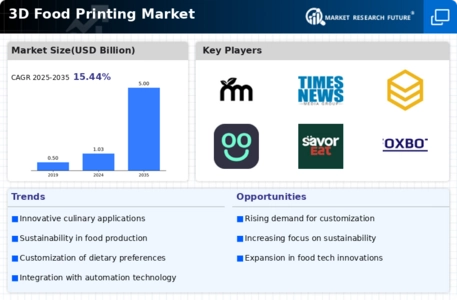
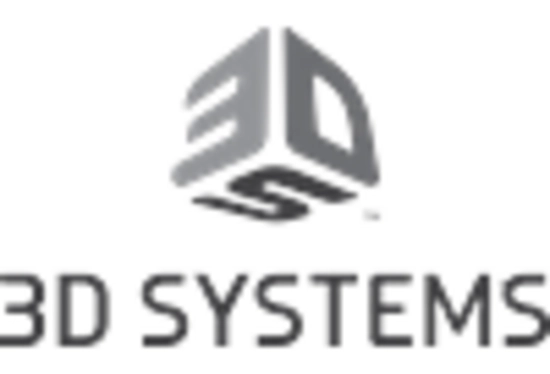

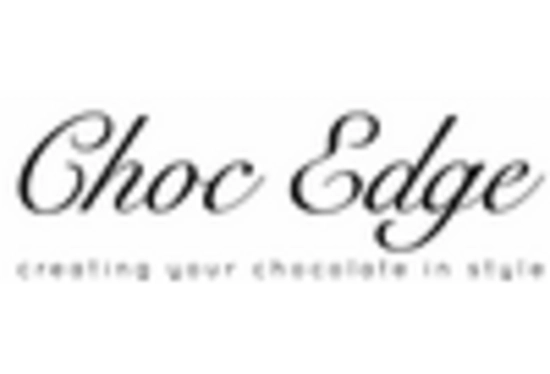

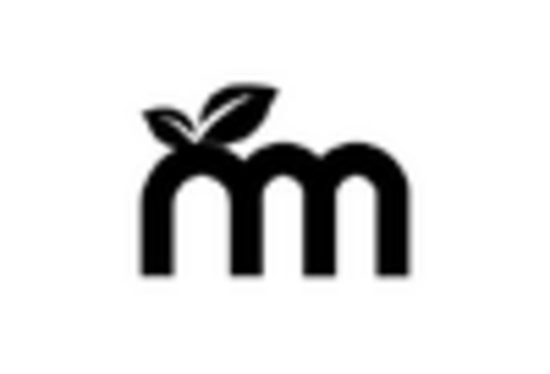
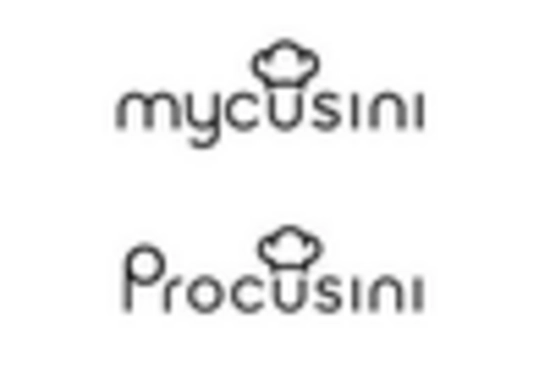

Leave a Comment